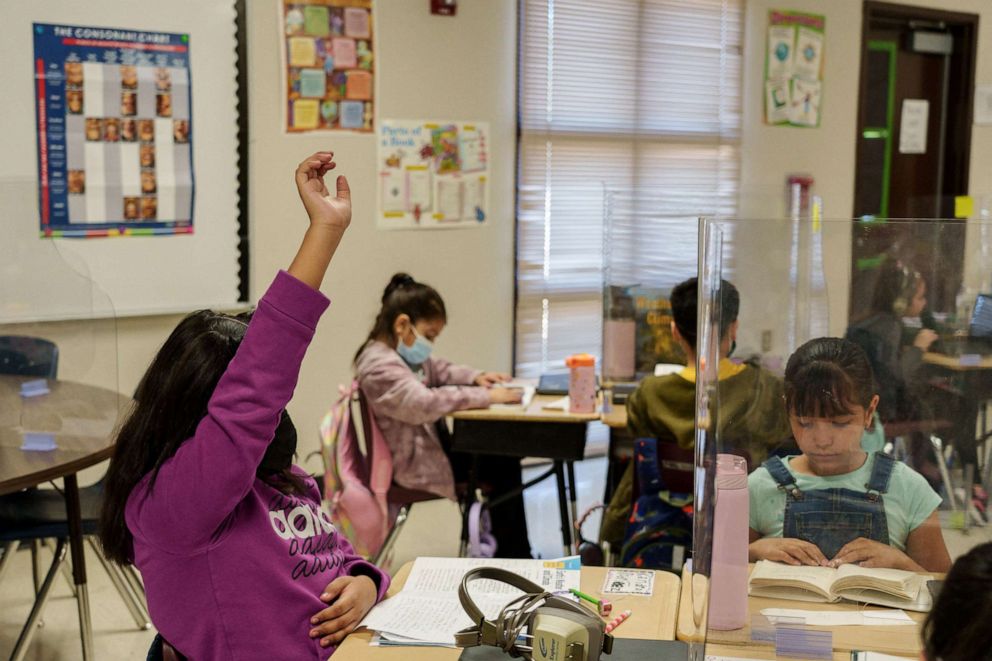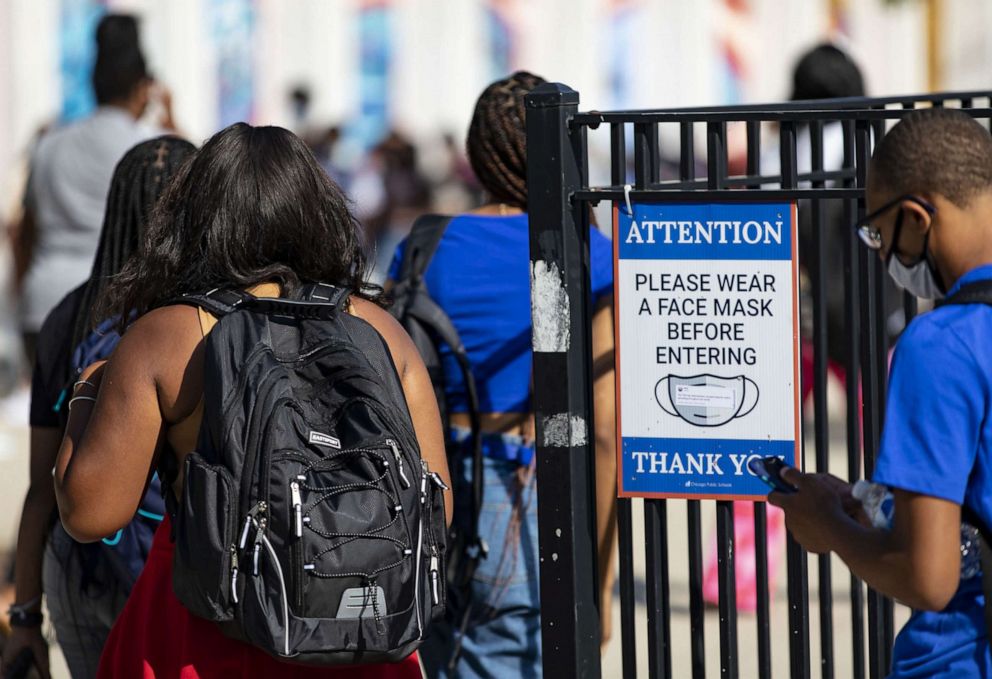New federal ventilation guidelines mark next step in fight against COVID
It's the first time such a standard has been created at the national level.
The Biden administration will announce new building ventilation standards for schools and businesses on Thursday -- a welcome step for experts who feel the U.S. has long been behind the curve on using air filtration as a valuable tool to fight COVID-19.
The new guidance, the latest addition to President Joe Biden's recent COVID-19 plan, is the first time such a standard has been created at the national level, synthesizing expert guidance on how clean air can prevent the spread of illness.
The new recommendations, which will be rolled out by the Environmental Protection Agency, urge all building owners and operators to hit four main steps in the form of a detailed "checklist" to ultimately get more fresh air in.
"It's a two-page document. It's written in plain language, very straightforward," Mary Wall, a senior policy adviser at the White House, told ABC News. "We think this is an action list that really all buildings can draw from."
The checklist includes tasks that cost money, like hiring an expert in HVAC systems to assess the building or adding extra ventilation to "higher risk areas," like a school nurses office, but also immediate, low-effort advice like opening windows and doors at opposite sides of a room to allow for "cross ventilation."

In the next few weeks, the White House will also announce a recognition program, Wall said, which will award buildings for their ventilation systems, similar to LEED certification awards for sustainable buildings.
Experts like Dr. Joseph Allen, director of the Healthy Buildings Program at the Harvard T.H. Chan School of Public Health, say the new guidance will be a necessary part of the country's COVID-19 response.
"The thing I think that is most important about this is the White House is using its pulpit to drive home the message that clean air and buildings matter. That sounds simple, but it's actually long overdue," said Allen, who advised the White House on the policy and has publicly pushed for greater focus on ventilation since early in the pandemic.
While it could have been helpful over the last two years, this is a particularly good moment to turn attention toward ventilation, Allen said, because it can be "operating all the time, in the background," even as masking has become a personal choice.
It also comes at a time when Americans are enjoying relaxed coronavirus measures, but cautiously eying a rise in cases in Europe and China from a more transmissible strain of omicron called the BA.2 variant that is expected to soon hit the U.S. to the same effect.
"We should take this reprieve. We're certainly gonna get another curveball in the future. When, where or what that looks like is undetermined, but we should be ready," Allen said. "These are improvements we could be making -- getting our buildings ready."
The Biden administration has no way to enforce the recommendations, though some experts sees it as a strong first step.

David Michaels, another adviser on the plan and a former head of the Occupational Safety and Health Administration, acknowledged that the federal government has no authority over indoor air, but compared this step to how the ban on indoor smoking became widespread in the early 2000s, despite no national laws in place.
"This will push states and cities to issue indoor rules just as they did on tobacco smoke," said Michaels, who is also a professor at George Washington University.
No new federal funding has been set aside to encourage buildings to upgrade their ventilation.
Wall pointed to existing funding streams, including the $122 billion allocated to schools through the American Rescue Plan for coronavirus relief and money in the infrastructure legislation Biden signed in November, as resources to help pay for improvements.
The White House intends the latest EPA standards to "re-raise this as an important priority," Wall said, particularly for schools that haven't yet been able to invest in better ventilation.
"I think that this is something that people haven't been as focused on, but that it can be very effective in reducing COVID spread," Wall said.
Proponents of improving the nation's indoor air quality also point to "decades of benefits that go beyond COVID."
In schools, better air quality has been shown to impact student test performance in math and reading. It's also led to reduced asthma attacks and fewer absences, Allen said.
On the business front, studies have shown fewer workers call out sick, higher cognitive function and better productivity. Allen, in his research, estimated the benefit of good air quality to be about $7,000 per person, per year, before COVID.
"We should have been doing this all along. But in terms of why now with COVID, we should be prepared for whatever comes next," Allen said.




